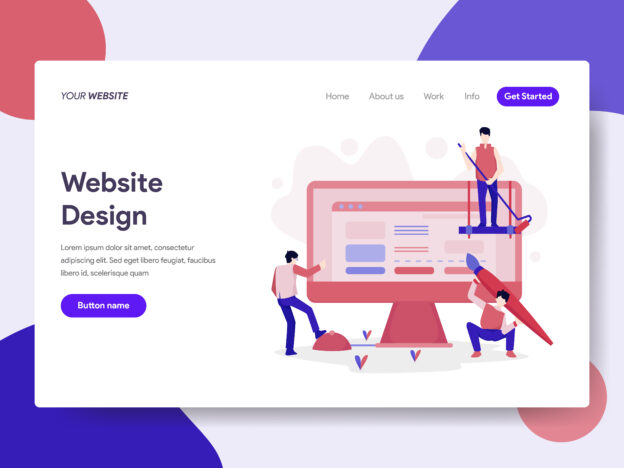In today’s digital age, web design plays a pivotal role in creating a strong online presence for businesses and individuals alike. A well-designed website not only captivates users but also enhances their overall browsing experience. To achieve this, web designers need to follow certain principles that align with the latest trends and user expectations. Here are 10 essential principles of modern web design that can help you create visually appealing and user-friendly websites.
- Simplicity: The principle of simplicity is at the core of modern web design. Clean layouts, minimalistic design elements, and ample white space create an uncluttered and intuitive user interface. Simplifying navigation and focusing on essential content allows users to find what they need quickly and efficiently.
- Mobile Responsiveness: With the increasing use of mobile devices, it is crucial to design websites that adapt seamlessly to different screen sizes. Responsive web design ensures optimal viewing experiences across various devices, improving user engagement and accessibility.
- Clear Typography: Typography plays a vital role in web design as it enhances readability and establishes visual hierarchy. Using appropriate font styles, sizes, and spacing helps convey the intended message effectively. Bold headings, legible body text, and consistent font choices contribute to a visually pleasing design.
- Visual Hierarchy: Organizing content with a clear visual hierarchy guides users’ attention and helps them navigate through the website effortlessly. Strategic placement of headlines, subheadings, and visually distinct elements such as images and buttons creates a logical flow and emphasizes important information.
- Color Scheme: Choosing an appropriate color scheme sets the overall tone and mood of a website. Consistent color palettes that complement the brand identity can evoke specific emotions and improve user engagement. Harmonious color combinations and contrast between foreground and background enhance readability and visual appeal.
- Accessibility: Designing websites with accessibility in mind ensures that people with disabilities can access and navigate the content effectively. Providing alternative text for images, using descriptive link text, and adhering to web accessibility guidelines enable a broader audience to engage with the website.
- Fast Loading Speed: In today’s fast-paced world, users have little patience for slow-loading websites. Optimizing images and files, minifying code, and leveraging caching techniques can significantly improve loading speed. A fast website creates a positive user experience and reduces bounce rates.
- Consistency: Consistency across the website promotes familiarity and helps users navigate and understand the interface easily. Consistent branding elements, typography, color scheme, and navigation structure create a cohesive and professional appearance.
- User-Centric Design: Designing with the user in mind is crucial to creating successful websites. Conducting user research, understanding their goals and behaviors, and incorporating intuitive user interfaces contribute to a positive user experience. User testing and feedback help identify areas for improvement and refine the design.
- Integration of Multimedia: Incorporating multimedia elements such as images, videos, and animations enhances the visual appeal and engagement of a website. Carefully chosen multimedia elements should support the content and provide value to the user experience, rather than overwhelming or distracting them.
With these essential principles, web designers at Web Design Agency in Mauritius can create visually stunning and user-friendly websites for you that leave a lasting impression on visiors. If you want to set the foundation for a successful web design pratice in the digital era, contact Web Design Agency in Mauritius.

